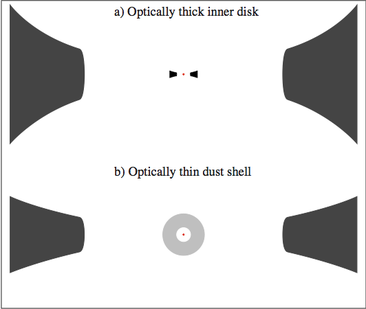What do the inner regions of transitional disks look like?

In pre-transitional disks, a near-infrared excess indicates the presence of dust close to the star, separated from the outer disk material by a wide annular gap. These gaps are thought to be formed by planets, but the geometry of the inner material remains unclear.
In this paper, we investigate the geometry of the transitional disk LkCa 15, a well studied protoplanetary disk with a solar-system sized gap. By modeling the observed SED using the radiative transfer code MCMax we find two possibilities for the disk geometry:
Either the inner material takes the form of an optically thick disk that casts a shadow on the outer disk, or the inner regions are optically thin and vertically extended. Imaging of the outer disk may break the degeneracies between both scenarios.
In this paper, we investigate the geometry of the transitional disk LkCa 15, a well studied protoplanetary disk with a solar-system sized gap. By modeling the observed SED using the radiative transfer code MCMax we find two possibilities for the disk geometry:
Either the inner material takes the form of an optically thick disk that casts a shadow on the outer disk, or the inner regions are optically thin and vertically extended. Imaging of the outer disk may break the degeneracies between both scenarios.

 RSS Feed
RSS Feed
